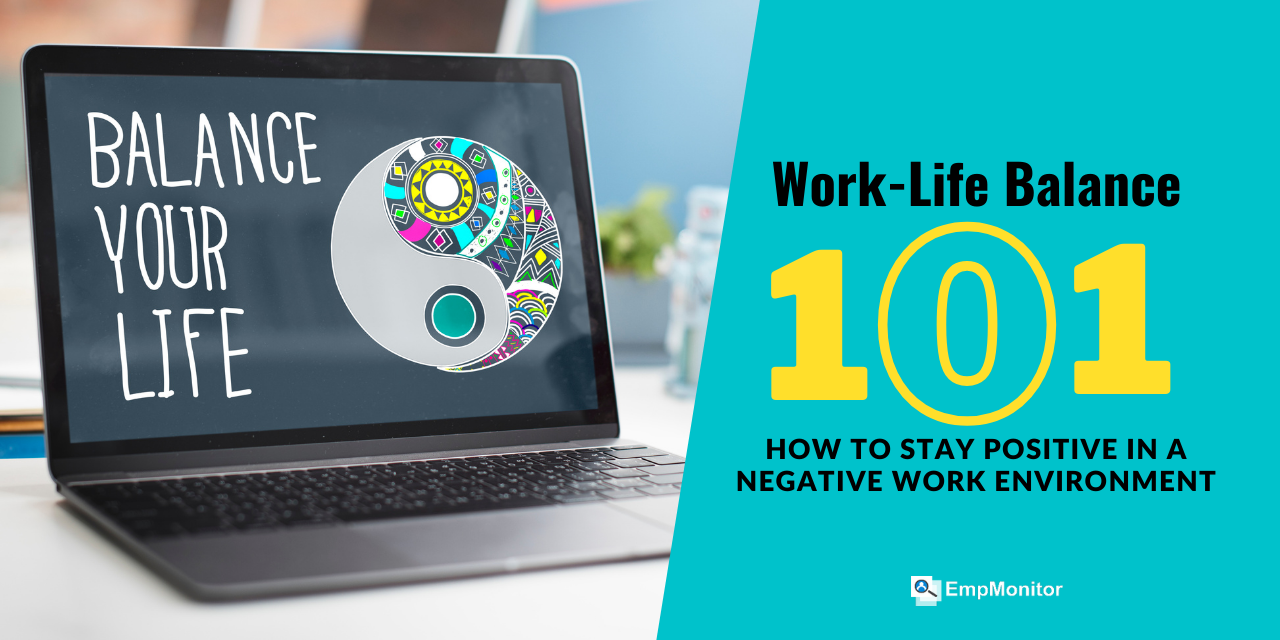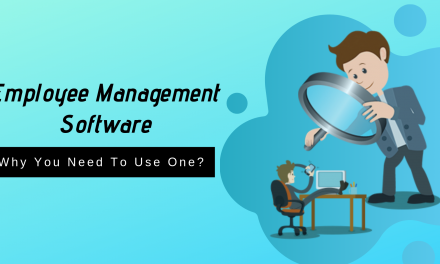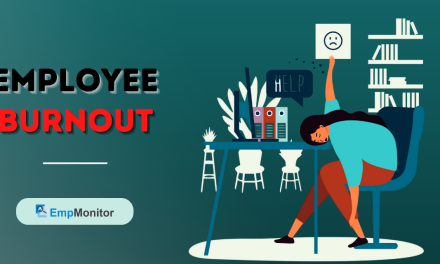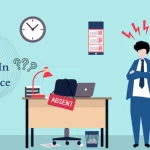Rewind to just a couple of years ago, and the way we defined – and approached – balancing our work lives with our personal lives looked very different than it does today.
For many people, remote and hybrid work have completely changed our work habits, schedules, where and when we get work done, as well as the boundaries we have between work and home.
While some employees used to groan about commutes, they signaled a beginning and end to the workday – something many remote and hybrid workers now struggle to recognize. And while some knowledge workers already had access to work-issued technology like a smartphone, the pandemic exacerbated our technology use. For many, video calls were the only means of communication and socialization for a moment in time.
With our constant access to work – and workplace technology – creating a good work-life balance is more critical than ever. As such, we’ve taken a closer look at what goes into a good work-life balance, why it matters so much, plus actionable tips to balance work and life in our always-on world.
What is Work-Life Balance?
Work-life balance is a method that helps employees of an organization to balance their personal and professional lives. Work-life balance encourages employees to divide their time on the basis of priorities and maintain a balance by devoting time to family, health, vacations, etc. along with making a career, business travel, etc.
It is an important concept in the world of business as it helps to motivate the employees and increases their loyalty towards the company.
Why is Work-Life Balance Important?
A healthy work-life balance foster growth, drives engagement, productivity, and retention.
Everyone wants more time in the day to do things they like, so isn’t a better work-life balance just wishful thinking? Actually, it’s far more than that. Achieving a work-life balance has proven to be vital for mental health and even physical health, both for office workers and freelancers. A lack of balance can lead to what is known as “burnout,” defined by the World Health Organization as:
“…a syndrome conceptualized as resulting from chronic workplace stress that has not been successfully managed..feelings of energy depletion or exhaustion; increased mental distance from one’s job, or feelings of negativism or cynicism related to one’s job; and reduced professional efficacy.”
Burnout is on the rise, causing workforces to lose motivation and productivity, as well as being linked to heart disease, blood pressure, and types of diabetes. Put simply, being in a constant state of stress isn’t healthy for anyone, or any business.
How to Balance Work and Life?
Know its value:
You might be surprised to know that a quality work-life balance is one of the things people want most of all. A recent study discovered that workers would be willing to get paid less if it meant they could work for a company that empathized more. That’s a pretty major compromise to make no matter what your personal circumstances are. However, it’s a clear indicator that people are no longer viewing work as their whole lives, but as a means to live them. What does this mean for you and your team? They need to know that you’re looking out for their interests and well-being, both in the office and at home.
Stop calling it balance:
An increasingly popular take on the idea of work-life conflict is to stop thinking of it as a delicate balance and to instead think of it as life as a whole. For example, don’t think that sending a few work emails over the weekend automatically strips your weekend of its status as “free time.” Similarly, don’t think taking a break during the workday implies that you’re not applying yourself.
Manage time and energy:
The workday is about more than the number of hours you spend at a desk. If you’re a manager or a boss, you should give your team the freedom to explore different ways of working. Our energy naturally goes through peaks and valleys throughout the day—don’t get on a co-worker for not being at peak output constantly. This leaves you feeling less stressed and more energized to make the most of out-of-work hours.
Plan and manage expectations:
Planning your workweek helps you determine the time you can dedicate to your personal life. For example, planning to go all-out every week can set you up for failure, disappointment, and burnout. Set more realistic expectations for yourself so you have more balanced energy for both your work and personal life.
Schedule time off as early as possible, even if you think you don’t need it. Do it on a cadence, as opposed to around an event like vacation or holidays. Pick an arbitrary date and recurrence, like the second Tuesday of each month for six months. That way your team can expect it, and you know you’ll have that designated time to recharge.
Encourage hobbies:
Every one of us has a hobby like reading, painting, photography, dancing, collecting old stamps and so on. A good work-life balance is not only limited to giving importance to work and family. It’s also about giving importance to the things that one loves doing on a personal level.
With all the hues and cries between managing work and family, we often miss feeding our hopes and aspirations. Having a hobby encourages an employee to take up some time for themselves.
This indeed helps them fulfill the thirst for a good life according to an employee’s preference. Having a hobby helps the employees to make up time for themselves even amidst their tight schedules.
Know when to seek professional help:
If your life feels too chaotic to manage and you’re spinning your wheels worrying about it, talk to a mental health provider. If you have access to an employee assistance program, take advantage of available services. Employers can manage employee work-life balance by using an employee internet activity tracker that allows them to understand employees’ productivity with their respective tasks.
Creating a work-life balance is a continuous process as your family, interests, and work-life change. Periodically examine your priorities — and make changes, if necessary — to make sure you’re keeping on track.
How To Stay Positive in a Negative Work Environment?
Always be Keen to learn and share what you learn:
Learning does not stop with getting a college degree and a job. We need to keep ourselves up to date with new developments, try and learn more and more from every work experience. We should try and imbibe the good working qualities of our seniors and co-workers. Learning is a continuous process that does not give us any time to be bored or feel negative. It empowers us and gives us confidence and positivity.
We should share our knowledge and work experiences with our co-workers who need to learn. This will lead to more positive people around us making our workplace a happy one. Sharing is caring and results in a stress-free happy working environment where we all are in sync.
Remain grateful for what is going well:
Make a gratitude list, let people know how thankful you are for their presence, and count your blessings for the small things. Put the good energy out into the world in return for all you have been given. Gratitude can go a long way in reminding us that life involves more than our immediate surroundings and expands beyond our everyday.
Don’t take it personally:
Many times when people are dealing with difficulties in their lives, those around them become the targets of their unhealthy coping strategies. Their behaviors manifest out of insecurities, fears, and anger. The most important thing you can remember is that this is about them, not you, and therefore don’t take it personally.
Build A Cordial relationship with co-workers:
Our work environment will be more comfortable and fun if we are surrounded by friendly people. Many times we have to take an initiative and break the ice. We must share a positive and interactive relationship with our co-workers. This will ensure a stress-free atmosphere, more productivity, and a happy and positive “YOU”. Besides this, we can make our workplace eye candy. A place where we spend several hours a day should make us happy. Put a few personal things on your work table like a cute family picture, a coffee mug with your favorite superhero character, or a cartoon character, basically anything which brings a soft smile to your face.
Smile More:
Last but not the least, try and smile more. Work can be stressful, can be annoying at times can be several other things which are not too much to our liking but always remember that a happy smiling habit can do wonders. It can change your mood and motivate you to do better and better. So Smile and leave a trail of positivity and goodwill.
Check Out Our Latest Posts:
How To Plan A Perfect Hybrid Remote Work Schedule For Your Workforce?
How Can Data Analytics Solutions Help You Achieve Your Business Goals In 2022?
Remote Work Best Practices That Every Company Should Imply
Wrapping Up:
It’s important to make it clear to employees that your organization understands the importance of work-life balance. Encourage employees to follow work-life balance best practices, and offer support and guidance if they need it. At the end of the day, an optimal work-life balance for your employees and you will be beneficial to your organization as a whole.














